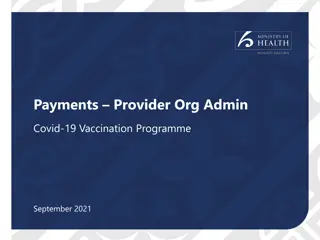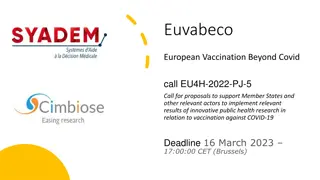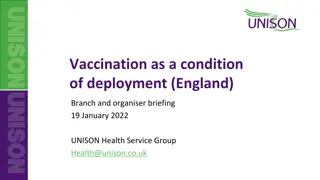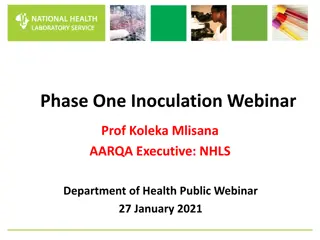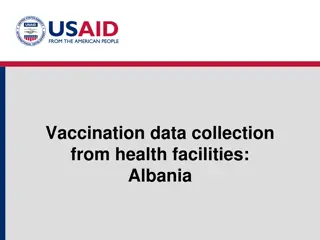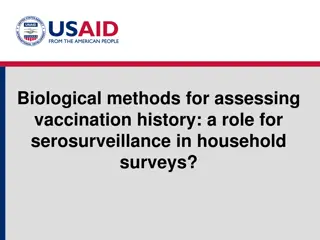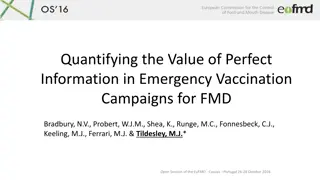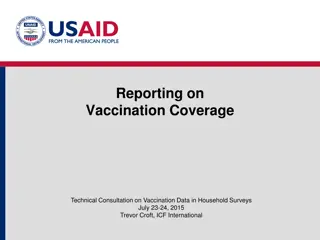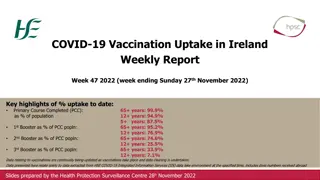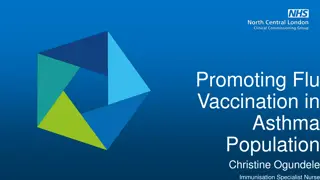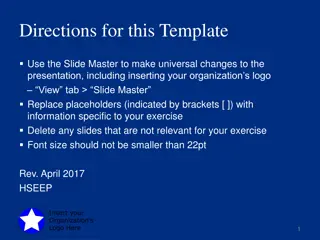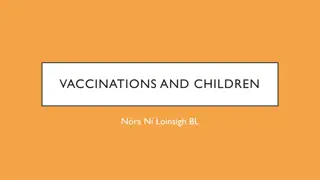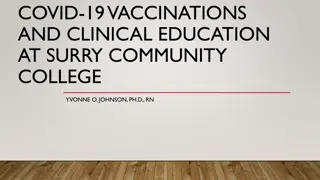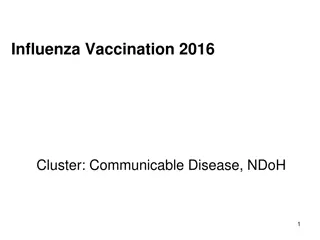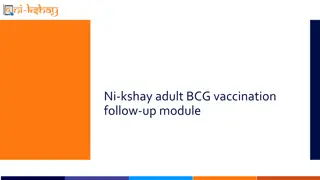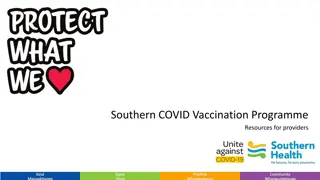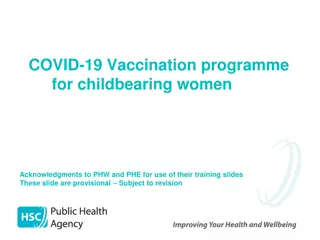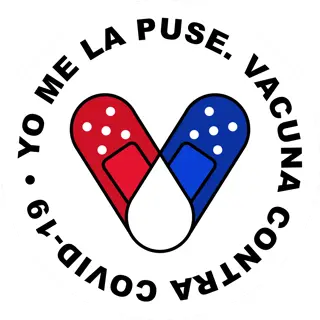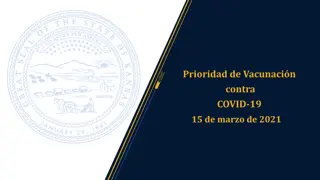Challenges and Strategies in Implementing New Vaccination Schedules
Exploring the complexities of introducing new vaccines and schedules, including different target groups and mixed vaccination schedules. Issues such as load on interviewers, multiple cards usage, and the need for clear vaccine descriptions are discussed. Strategies like fixed sites, outreach, and mobile teams are also highlighted for effective vaccination programs.
Download Presentation

Please find below an Image/Link to download the presentation.
The content on the website is provided AS IS for your information and personal use only. It may not be sold, licensed, or shared on other websites without obtaining consent from the author. Download presentation by click this link. If you encounter any issues during the download, it is possible that the publisher has removed the file from their server.
E N D
Presentation Transcript
New vaccines, schedules, and target groups
Old schedule 1 dose of BCG 3 doses of DPT 3 doses of Oral Polio 1 dose of Measles
Different combinations DPT, Hep.B, and HiB Still separate in some countries Increasingly as Pentavalent Pentavalent Occasionally different combinations (particularly with private sector health facilities e.g. Gabon) Measles Sometimes with Rubella (MR) and Mumps (MMR) Polio OPV + IPV Pneumococcal 3p+0 2p+1 Rotavirus 2 dose (with DPT/Penta 1 and 2) - Rotarix 3 dose (with DPT/Penta 1, 2, 3) - Rota Teq To come? Hexavalent (includes IPV). Others?
Mixed schedules Changes in combinations of vaccines Changes in vaccine schedules Delayed revision of immunization cards Questionnaire needs to handle all possible combinations in use the 3 years preceding the survey If changes have occurred data collection and reporting can be very complicated. Vaccinations given outside of the government health system also need to be handled Private facilities Given outside of the country (e.g. children in Lesotho may be vaccinated in South Africa)
Issues with including newer vaccines Load on interviewers and respondents Ability of respondents to provide all of the information needed Multiple cards used Cards not current with the national schedule Revision of cards happens later than introduction of newer vaccines Mother s recognizing the different types of vaccination How can a mother tell the difference between DPT, single dose HepB, Rotavirus, Pneumococcal? How do we expect them to remember? It is already difficult and its going to get worse with more antigens Need for good descriptions of individual vaccines
Different target groups Indicators for children 12-23. Data collected for children under age of 3. MCV1 may be given at 12 or 15 months. MCV2 at 18-24 months (or possibly later). HPV at age 9-13 years More later
Newer strategies Fixed sites Outreach Mobile teams Campaigns Child health days Schools Each may have their own vaccination card or HBR Monitoring all sources, or only routine?
Human Papillomavirus (HPV) HPV Given to girls (and boys) age 9-13 yrs 3 doses Possible approaches: A. Module for 10-14 year olds? B. Monitor for girls 15-19 as part of the women s questionnaire Only other vaccine typically for this age is tetanus Indicator: 15 yr olds vaccinated with HPV1, HPV2, HPV3 by age 15 Sample size issue? Probably need to combine age groups, e.g. 15-16 yrs
New technologies for data collection Scanning cards? No software found that can scan and capture dates from cards Photographing cards? Captured image, but still need data entry of data on card Perhaps only used for reviewing cards with data that are questionable. Privacy concerns? Computer Assisted Personal Interviewing Already in use in many surveys Permits data checking and eliminates many errors Serosurveillance To be discussed Other ideas?

 undefined
undefined








